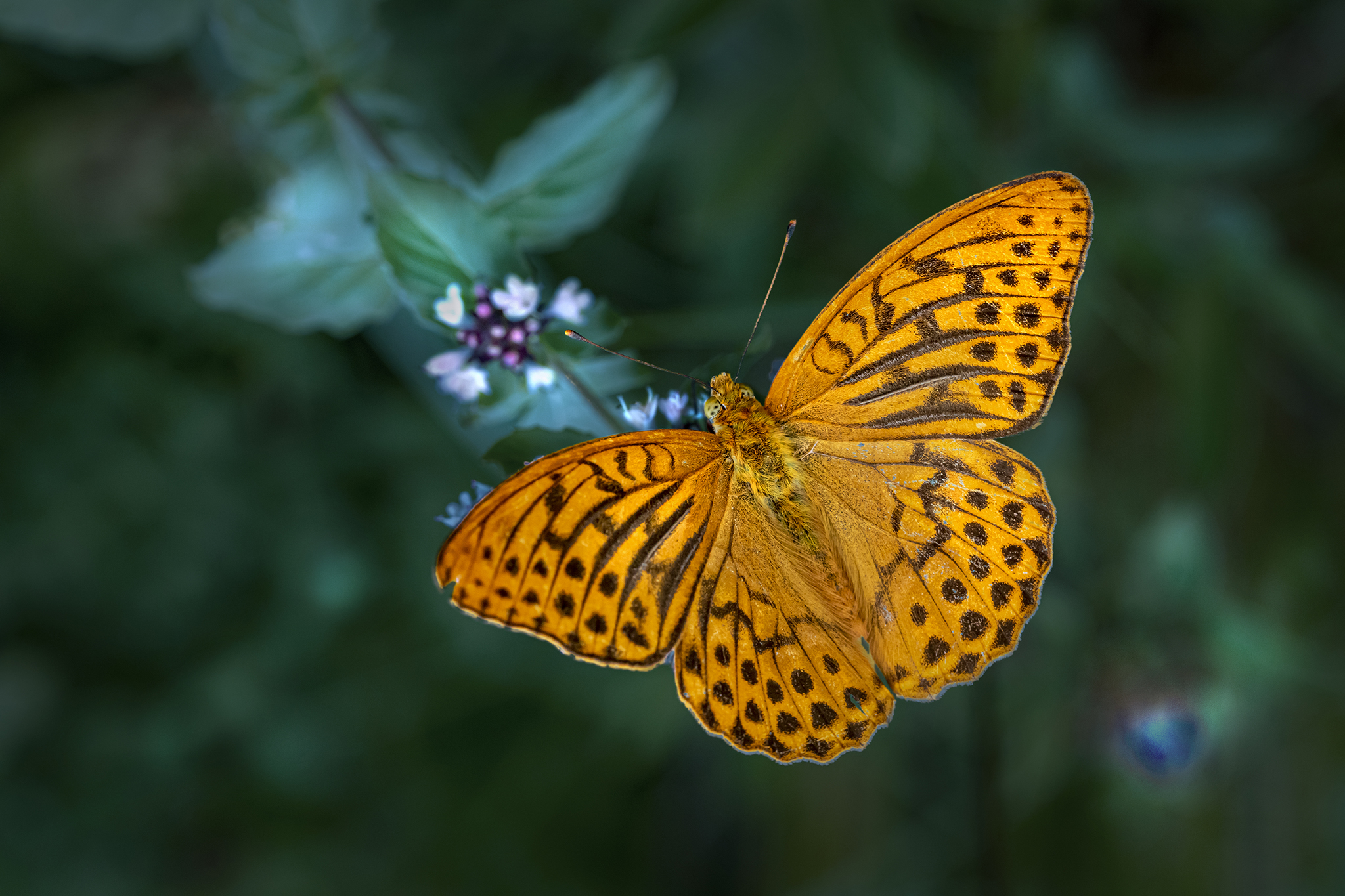That is a beautiful butterfly! The Silver-washed Fritillary (Argynnis paphia) is one of the largest and most magnificent butterflies found in Europe, belonging to the family Nymphalidae (Brush-footed butterflies). It is named for the distinctive silvery streaks on the underside of its wings.
Here is a deep review of its key characteristics, life cycle, and behavior.
🦋 Silver-washed Fritillary (Argynnis paphia) Deep Review
1. Identification and Morphology
| Feature | Male | Female |
| Size | Large, with a wingspan typically ranging from 54–70 mm (2.1–2.8 inches). | Larger, reaching up to 75 mm. |
| Upperside Coloration | Rich, bright orange-brown with a complex pattern of black spots and lines. | Duller, paler orange-brown with similar black markings. |
| Sexual Markings | Males possess four prominent dark, raised scent scales (androconia) running along the veins of the forewings. These streaks are used to disperse pheromones during courtship. | Females lack these dark streaks. |
| Underside (Key Feature) | The hindwings are primarily greenish with four to five striking silvery-white stripes or washes running across them. This pattern gives the butterfly its common name. | Similar silvery streaks on the hindwings. |
| Form Valezina | A rare form of the female, known as f. valezina, is found in Western and Central Europe. These females have a dull, olive-green or grayish-green ground color instead of orange, making them look dramatically different. |
2. Habitat and Distribution
- Geographic Range: Widespread across the Palaearctic region, spanning most of Europe (though absent from the far north) eastward through Russia and temperate Asia to Japan and China.
- Habitat Preference: The Silver-washed Fritillary is strongly associated with woodlands:
- Primary Habitats: Open, sunny, deciduous, or mixed woodlands, especially those with wide rides, glades, or edges.
- Key Requirement: They require a mature woodland canopy that provides shade, but also sunny clearings for adults to bask and for the larval host plants to grow.
- Activity: Adults are fast, powerful fliers, often flying high in the tree canopy, but they descend frequently to nectar on flowers.
3. Life Cycle and Ecology
The Silver-washed Fritillary is univoltine (one generation per year), flying in the summer months.
- Adult Flight Season: Typically flies from late June to September. Adults primarily feed on nectar from bramble (Rubus fruticosus), thistles, and hemp-agrimony.
- Egg Laying (Unique): The female has a unique method of oviposition. She does not lay her eggs directly on the host plant. Instead, she lays them singly on the bark of trees (often oak, beech, or birch) close to the ground, usually near a patch of the larval host plant.
- Larva (Caterpillar): The caterpillar hatches in autumn and immediately seeks a safe place to hibernate over winter without feeding. It starts feeding in the spring. The mature caterpillar is dark brown or black with two yellow lines running along its back and prominent reddish-brown spines.
- Host Plants: The larvae are specialists, feeding on the leaves of Violets (Viola species), particularly Common Dog-violet (Viola riviniana) and Wood Dog-violet (Viola reichenbachiana).
- Pupa (Chrysalis): The pupa hangs suspended from a twig or stem and is typically pale green or brown, adorned with gold spots.
4. Conservation
- Conservation Status: Generally Least Concern (LC) across its global range.
- Threats: The species relies heavily on traditional woodland management that creates sunny clearings and wide, sheltered rides, allowing violets to flourish. Modern forestry practices, particularly dense replanting and clear-felling without creating open sunny areas, can lead to local population declines. Reverting to coppicing or rotational ride management is beneficial for the species.
Visited 836 times, 16 visit(s) today
Views: 1425
Subscribe to the newsletter:
